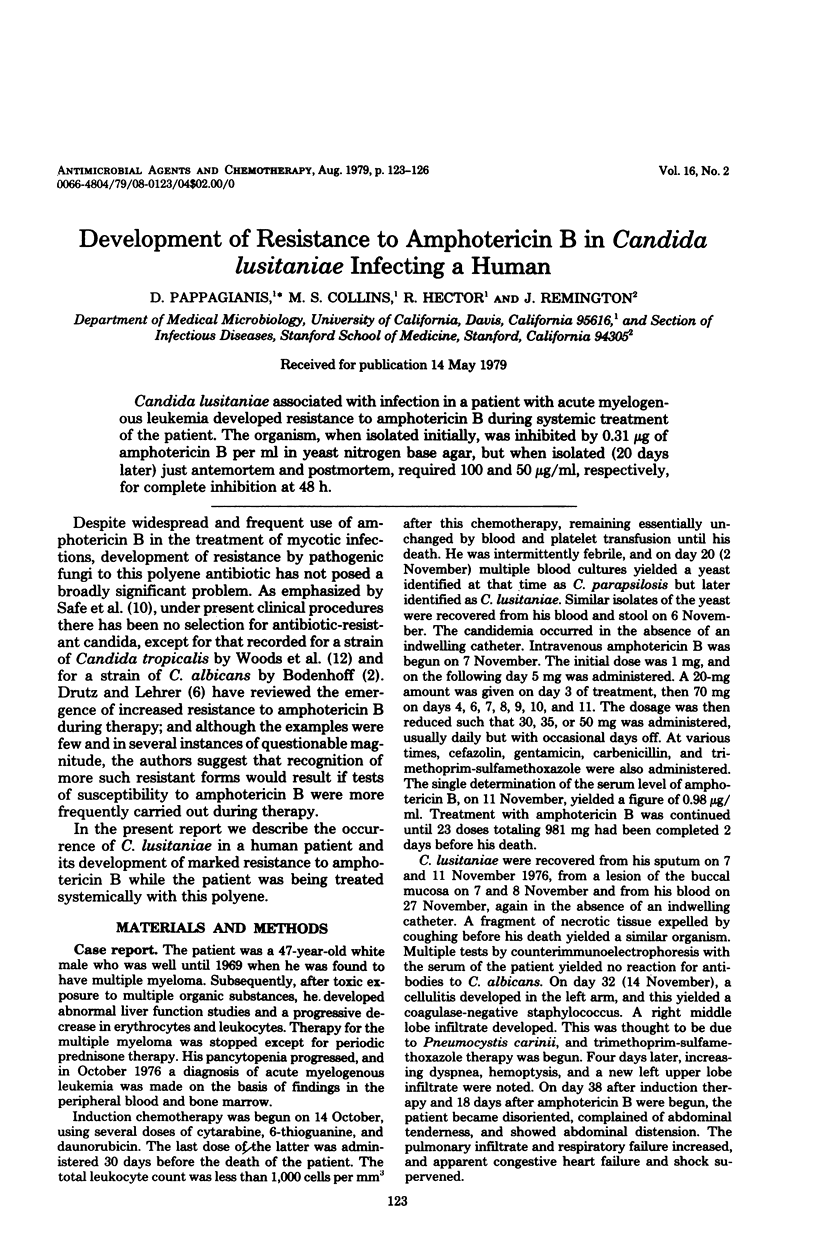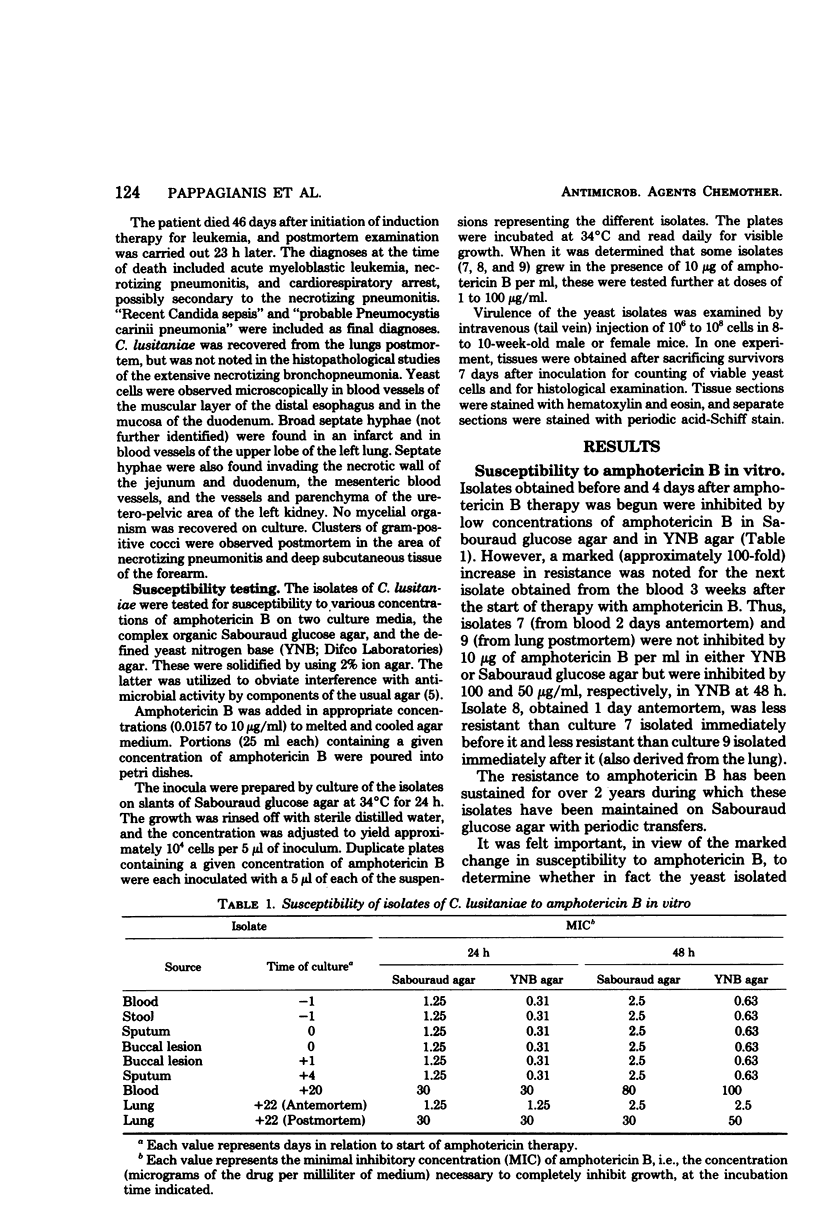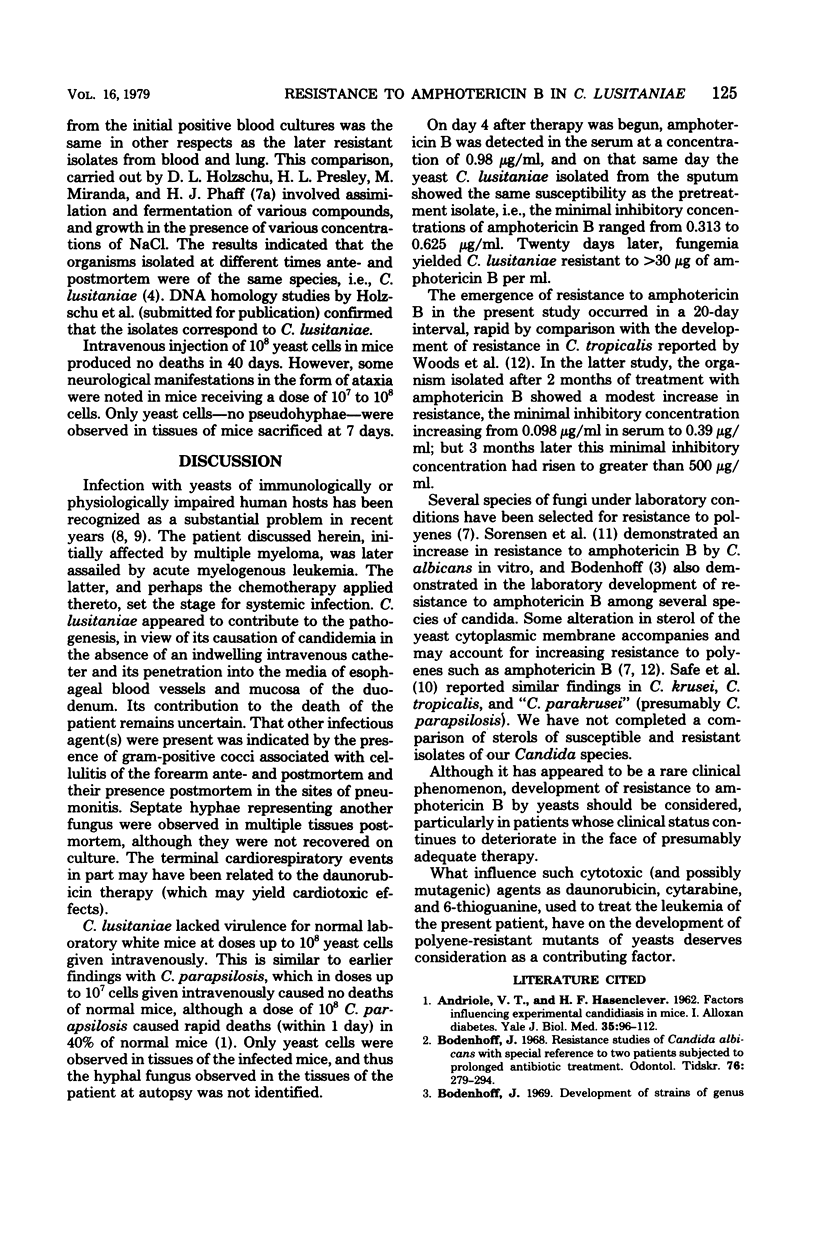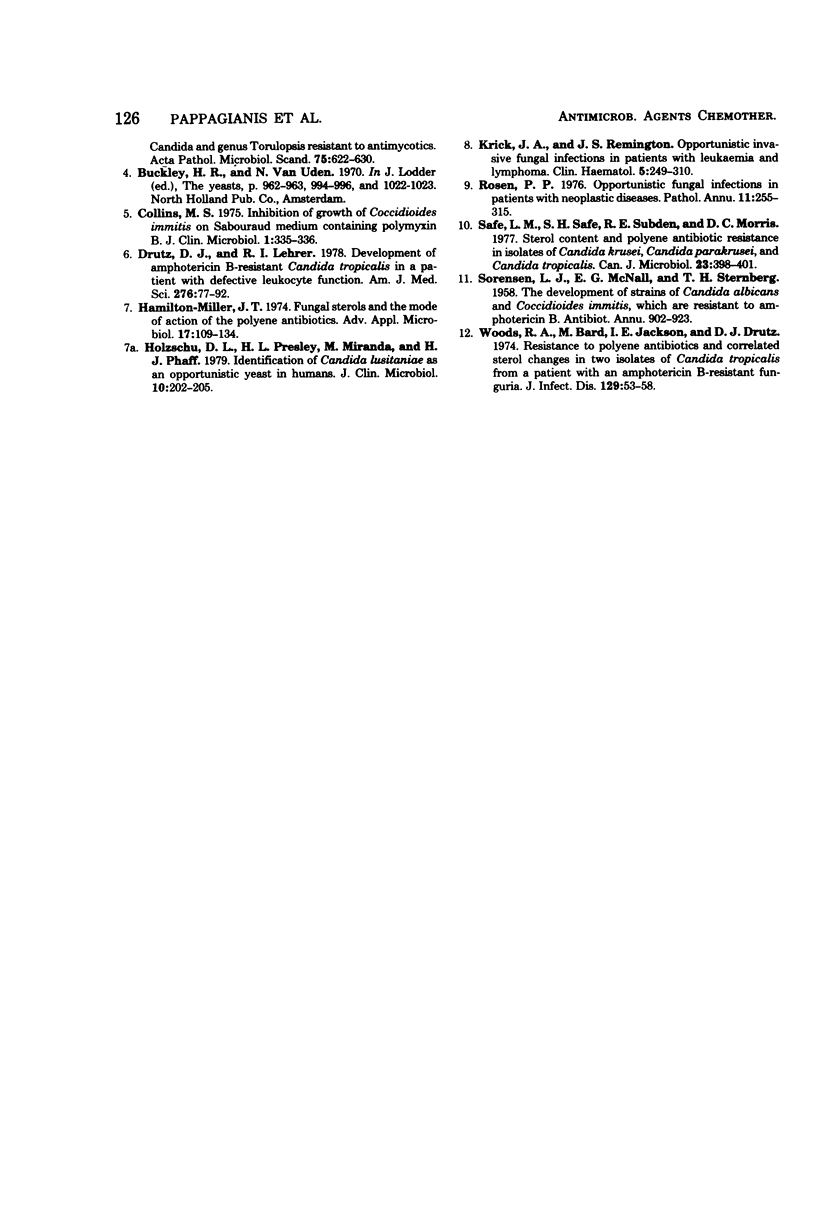Abstract
Candida lusitaniae associated with infection in a patient with acute myelogenous leukemia developed resistance to amphotericin B during systemic treatment of the patient. The organism, when isolated initially, was inhibited by 0.31 μg of amphotericin B per ml in yeast nitrogen base agar, but when isolated (20 days later) just antemortem and postmortem, required 100 and 50 μg/ml, respectively, for complete inhibition at 48 h.
Full text
PDF



Selected References
These references are in PubMed. This may not be the complete list of references from this article.
- ANDRIOLE V. T., HASENCLEVER H. F. Factors influencing experimental candidiasis in mice. I. Alloxan diabetes. Yale J Biol Med. 1962 Aug;35:96–112. [PMC free article] [PubMed] [Google Scholar]
- Bodenhoff J. Resistance studies of Candida albicans, with special reference to two patients subjected to prolonged antimycotic treatment. Odontol Tidskr. 1968 Jun 28;76(3):279–294. [PubMed] [Google Scholar]
- Collins M. S. Inhibition of growth of Coccidioides immitis on Sabouraud medium containing polymyxin B. J Clin Microbiol. 1975 Mar;1(3):335–336. doi: 10.1128/jcm.1.3.335-336.1975. [DOI] [PMC free article] [PubMed] [Google Scholar]
- Drutz D. J., Lehrer R. I. Development of amphotericin B-resistant Candida tropicalis in a patient with defective leukocyte function. Am J Med Sci. 1978 Jul-Aug;276(1):77–92. [PubMed] [Google Scholar]
- Hamilton-Miller J. M. Fungal sterols and the mode of action of the polyene antibiotics. Adv Appl Microbiol. 1974;17(0):109–134. doi: 10.1016/s0065-2164(08)70556-2. [DOI] [PubMed] [Google Scholar]
- Holzschu D. L., Presley H. L., Miranda M., Phaff H. J. Identification of Candida lusitaniae as an opportunistic yeast in humans. J Clin Microbiol. 1979 Aug;10(2):202–205. doi: 10.1128/jcm.10.2.202-205.1979. [DOI] [PMC free article] [PubMed] [Google Scholar]
- Rosen P. P. Opportunistic fungal infections in patients with neoplastic diseases. Pathol Annu. 1976;11:255–315. [PubMed] [Google Scholar]
- SORENSEN L. J., McNALL E. G., STERNBERG T. H. The development of strains of Candida albicans and Coccidioides immitis, which are resistant to amphotericin B. Antibiot Annu. 1958;6:920–923. [PubMed] [Google Scholar]
- Safe L. M., Safe S. H., Subden R. E., Morris D. C. Sterol content and polyene antibiotic resistance in isolates of Candida krusei, Candida parakrusei, and Candida tropicalis. Can J Microbiol. 1977 Apr;23(4):398–401. doi: 10.1139/m77-058. [DOI] [PubMed] [Google Scholar]
- Woods R. A., Bard M., Jackson I. E., Drutz D. J. Resistance to polyene antibiotics and correlated sterol changes in two isolates of Candida tropicalis from a patient with an amphotericin B-resistant funguria. J Infect Dis. 1974 Jan;129(1):53–58. doi: 10.1093/infdis/129.1.53. [DOI] [PubMed] [Google Scholar]


